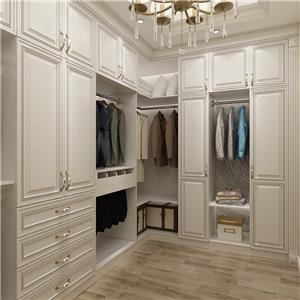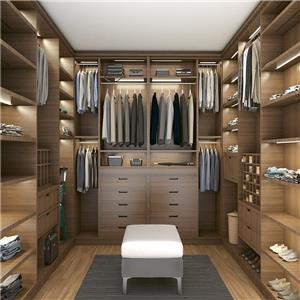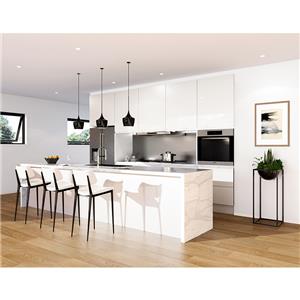Kitchen Pantry Cupboards: A Comprehensive Guide
Kitchen Pantry Cupboards: A Comprehensive Guide
Introduction
The kitchen pantry cupboard is an essential component of any well - organized kitchen. It serves as a dedicated storage space for food items, cookware, and various kitchen essentials, helping to keep the cooking area tidy and efficient. In a modern home, where functionality and aesthetics go hand in hand, the right pantry cupboards can transform the kitchen from a cluttered space into a harmonious and highly functional area. This article will explore every aspect of kitchen pantry cupboards, from their diverse types and styles to considerations for choosing, installing, and maintaining them. Whether you are in the midst of a kitchen renovation or simply looking to optimize your storage space, this guide will provide you with valuable insights.
Understanding Kitchen Pantry Cupboards
Definition and Function
Types of Kitchen Pantry Cupboards
Freestanding Pantry Cupboards
Advantages: Freestanding pantry cupboards offer great flexibility. They can be easily moved around the kitchen or even to other areas of the house if needed. This makes them an ideal choice for renters or for those who like to rearrange their living spaces frequently. They come in a wide variety of sizes, styles, and materials, making it easy to find one that suits your decor and storage needs. For example, a small, narrow freestanding pantry can fit perfectly in a corner of a galley kitchen, while a larger, more elaborate one can serve as a focal point in a farmhouse - style kitchen.
Design Variations: These cupboards can have a simple, basic design with just a few shelves and a door, or they can be more complex with multiple drawers, pull - out shelves, and even built - in wine racks or spice organizers. Some freestanding pantries are designed to mimic the look of furniture, with decorative details such as moldings and carved wood accents, adding an aesthetic touch to the kitchen.
Built - In Pantry Cupboards
Space Optimization: Built - in pantry cupboards are custom - made to fit a specific space in the kitchen, such as an alcove, a corner, or a dedicated pantry area. They are an excellent choice for maximizing storage space, especially in kitchens where every square inch counts. Since they are tailored to the dimensions of the space, there is no wasted area, and they can be designed to reach from the floor to the ceiling, providing vertical storage.
Customization Options: With built - in pantries, homeowners have the freedom to customize every aspect of the design. This includes choosing the type of shelves (adjustable, fixed, or a combination), the number and size of drawers, and the style of the doors. For instance, a family that frequently buys large - sized food packages may opt for deep, wide shelves in their built - in pantry, while a home cook who loves to bake may include a pull - out baking sheet organizer.
Corner Pantry Cupboards
Utilizing Awkward Spaces: Corner pantry cupboards are specifically designed to fit into the corners of a kitchen. Kitchen corners often go under - utilized, but corner pantries can transform these awkward spaces into highly functional storage areas. They are available in different configurations, such as lazy susan - style corner pantries, which have rotating shelves that allow for easy access to items stored at the back of the corner.
Storage Solutions: These cupboards can be either freestanding or built - in. Some corner pantries come with pull - out shelves or drawers that slide out from the corner, making it convenient to retrieve items. They are also a great option for storing bulky items like large pots and pans, as the corner location can accommodate their size without taking up too much floor space.
Wall - Mounted Pantry Cupboards
Saving Floor Space: Wall - mounted pantry cupboards are a great choice for kitchens with limited floor space. They are attached to the wall, usually at a height that is easily accessible, and can be used to store light - weight items such as spices, small food containers, and frequently used kitchen utensils. This type of pantry cupboard helps to keep the countertops clear and the kitchen looking more spacious.
Design Considerations: Wall - mounted pantries can have a simple, minimalist design with open shelves for a modern look, or they can have doors to conceal the contents for a more traditional or organized appearance. They can also be combined with other wall - mounted storage units, such as spice racks or utensil holders, to create a cohesive storage system.
Styles of Kitchen Pantry Cupboards
Traditional Styles
Country - Style Pantry Cupboards
Design Elements: Country - style pantry cupboards often feature natural wood finishes, such as oak or pine, which give them a warm and rustic look. The doors may have raised panels or decorative moldings, and the hardware is typically simple and functional, like wrought - iron handles or knobs. These cupboards may also include details like beadboard backing, which adds to their charming, farmhouse - inspired aesthetic.
Suitability: They are a perfect fit for kitchens with a country, cottage, or farmhouse - style decor. A country - style pantry can be used to store not only food but also decorative items such as mason jars filled with dried herbs or colorful kitchenware, enhancing the overall cozy atmosphere of the kitchen.
Classic Shaker - Style Pantry Cupboards
Characteristics: Shaker - style pantry cupboards are known for their simplicity and clean lines. They have flat - panel doors with a recessed center panel, and the overall design is understated yet elegant. The use of solid wood in Shaker - style cabinets, along with their timeless design, makes them suitable for a wide range of kitchen styles, from traditional to more contemporary.
Popularity: Their popularity stems from their versatility and durability. Shaker - style pantry cupboards can be stained or painted in various colors, allowing homeowners to match them with the existing color scheme of their kitchen. They are also easy to maintain, and the simple design makes it easy to access the items stored inside.
Contemporary Styles
Modern Minimalist Pantry Cupboards
Aesthetic Appeal: Modern minimalist pantry cupboards focus on simplicity and functionality. They often have sleek, flat - panel doors with a high - gloss or matte finish, and may be made of materials like laminate, high - density fiberboard (HDF), or even metal. Handle - less designs are common in modern minimalist pantries, giving them a seamless and uncluttered look.
Space - Saving Features: These cupboards are designed to make the most of limited space, with features such as pull - out shelves, hidden compartments, and vertical storage solutions. They are an excellent choice for small, urban kitchens where maximizing storage while maintaining a clean, modern aesthetic is crucial.
Industrial - Inspired Pantry Cupboards
Design Features: Industrial - inspired pantry cupboards draw inspiration from factory and industrial settings. They may feature exposed metal frames, pipes used as shelving supports, and unfinished or distressed wood. The color palette often includes shades of gray, black, and silver, along with natural wood tones.
Functionality and Style: These cupboards not only add a unique style statement to the kitchen but also offer practical storage solutions. The open - shelving design in industrial - inspired pantries allows for easy visibility of stored items, and the sturdy construction can handle heavy - duty storage needs.
Choosing the Right Kitchen Pantry Cupboards
Assessing Your Storage Needs
Food Storage Requirements
Dry Goods and Canned Foods: Consider the amount of dry goods like pasta, rice, flour, and canned foods you typically store. If you buy in bulk, you will need a pantry with deep, wide shelves or large drawers to accommodate these items. For example, a family that frequently stocks up on canned goods for emergencies may need a pantry with multiple shelves specifically dedicated to canned food storage.
Perishable Items: If you plan to store some perishable items in the pantry, such as potatoes, onions, or garlic, look for a pantry with good ventilation. Some pantries come with built - in ventilation systems or mesh - covered doors to allow air circulation, which helps keep these items fresh for longer.
Utensil and Cookware Storage
Small Utensils: If you have a large collection of small utensils like spatulas, whisks, and ladles, a pantry with drawer dividers or built - in utensil holders can help keep them organized. Some pantries even come with specialized slots or hooks for hanging utensils, making them easily accessible.
Cookware: For storing cookware, consider a pantry with enough vertical space to accommodate pots and pans of different sizes. Pull - out shelves or racks can be very useful for storing cookware, as they allow you to easily access the items at the back of the pantry without having to move everything in front.
Considering Your Kitchen Layout
Small Kitchens
Space - Saving Options: In small kitchens, every inch of space matters. A wall - mounted pantry cupboard or a narrow, freestanding pantry can be a great choice. Corner pantries are also an excellent option for small kitchens, as they make use of otherwise wasted corner space. You can also consider a pantry with fold - out or pull - out shelves, which can expand the storage area when needed but take up less space when not in use.
Multi - Functional Designs: Look for pantry cupboards that offer multi - functionality. For example, a pantry with a built - in cutting board or a fold - down work surface can double as a preparation area, saving you valuable counter space in a small kitchen.
Large Kitchens
Custom - Built Pantries: In large kitchens, you have more room to work with, so custom - built pantries are a great option. You can design a pantry with multiple levels, walk - in access, and specialized storage areas for different types of items. A large pantry can also be used to store larger appliances like a deep - freeze or a second refrigerator.
Island Pantries: If your kitchen has an island, consider adding a pantry to the island. This can provide additional storage space and make it convenient to access items while cooking. Island pantries can be designed with drawers, shelves, or even wine racks, depending on your needs.
Budget Considerations
Cost of Materials
Solid Wood: Solid wood pantry cupboards are generally the most expensive option. Woods like oak, cherry, and mahogany are not only durable but also offer a high - quality, luxurious look. However, they require regular maintenance to keep their appearance. The cost of solid - wood pantries can vary depending on the type of wood and the complexity of the design.
Laminate and MDF: Laminate and medium - density fiberboard (MDF) are more budget - friendly options. Laminate comes in a wide range of colors and patterns, allowing you to mimic the look of wood or other materials at a lower cost. MDF is a versatile material that can be painted or covered with veneer. Pantries made from these materials are generally more affordable and are a good choice for those on a tight budget.
Custom vs. Stock Pantry Cupboards
Stock Pantry Cupboards: Stock pantry cupboards are pre - made and come in standard sizes and styles. They are the most cost - effective option, as they are mass - produced. However, they may not fit your space or storage needs perfectly. Stock pantries are a good choice if you are looking for a quick and inexpensive storage solution.
Custom Pantry Cupboards: Custom pantry cupboards are made to order according to your specific design and size requirements. They offer the highest level of customization but are also the most expensive. If you have unique storage needs or a specific design vision for your kitchen, custom pantries are worth the investment.
Installation of Kitchen Pantry Cupboards
Preparation Before Installation
Measuring the Space
Accuracy is Key: Before installing a pantry cupboard, it is crucial to measure the space where it will be placed accurately. Measure the height, width, and depth of the area, taking into account any obstacles such as electrical outlets, pipes, or uneven walls. For a built - in pantry, measure the exact dimensions of the alcove or corner where it will be installed. If you are installing a freestanding pantry, measure the available floor space to ensure that the cupboard will fit comfortably.
Accounting for Clearance: Leave enough clearance around the pantry for easy access. Consider the space needed to open the doors or drawers fully without hitting other furniture or walls. Also, if you plan to use the pantry to store large items, make sure there is enough space to maneuver them in and out of the cupboard.
Gathering Tools and Materials
Essential Tools: You will need tools such as a drill, screwdriver, level, tape measure, and saw (if you need to make any cuts). A stud finder is also essential if you are installing a built - in or wall - mounted pantry, as you will need to secure the cupboard to the studs in the wall.
Mounting Hardware: Depending on the type of pantry cupboard, you will need appropriate mounting hardware. This may include screws, wall anchors, brackets, and hinges. Make sure to choose hardware that is strong enough to support the weight of the pantry and its contents.
Installation Process
Installing Freestanding Pantry Cupboards
Leveling the Surface: Place the freestanding pantry on a level surface. If the floor is uneven, you may need to use shims to level the cupboard. Use a level to check that the pantry is plumb (vertical) and level (horizontal) from all sides.
Securing the Pantry: Some freestanding pantries come with anti - tipping devices that can be secured to the wall for added stability, especially if the pantry is tall or top - heavy. If your pantry has this feature, follow the manufacturer's instructions to attach it to the wall using screws or wall anchors.
Installing Built - In Pantry Cupboards
Framing the Space: If you are building a new built - in pantry, start by framing the space. Use 2x4s to create a frame that fits the dimensions of the pantry. Secure the frame to the studs in the wall and the floor using screws.
Installing the Cabinet Boxes: Once the frame is in place, install the cabinet boxes. Start with the bottom cabinets and work your way up. Use a level to ensure that each cabinet is level and plumb. Secure the cabinets to the frame and to each other using screws or cabinet - joining hardware.
Adding Doors, Drawers, and Shelves: After the cabinet boxes are installed, add the doors, drawers, and shelves. Follow the manufacturer's instructions for installing the hinges, drawer slides, and shelf supports. Adjust the doors and drawers as needed to ensure they open and close smoothly.
Installing Wall - Mounted Pantry Cupboards
Marking the Wall: Use a level to mark a horizontal line on the wall at the desired height for the pantry. Then, use a stud finder to locate the studs in the wall and mark their positions.
Mounting the Brackets: Install the mounting brackets on the wall, aligning them with the stud marks. Use screws to secure the brackets to the studs. Make sure the brackets are level.
Hanging the Pantry: Lift the wall - mounted pantry into place and attach it to the brackets using screws. Check that the pantry is level and secure.
Maintenance and Care of Kitchen Pantry Cupboards
Cleaning Your Pantry Cupboards
Regular Dusting
Using the Right Tools: Use a soft, dry cloth or a feather duster to regularly dust the pantry cupboards. Pay attention to the shelves, corners, and the tops of the cupboards, as these areas tend to collect dust. For hard - to - reach places, you can use a small brush or a vacuum cleaner with a soft - bristle attachment.
Frequency: Dusting should be done at least once a week to prevent the build - up of dirt and dust, which can attract pests and make the pantry look unkempt.
Deep Cleaning
Removing Items: Once every few months, it's a good idea to do a deep clean of the pantry. Start by removing all the items from the pantry and checking their expiration dates. Discard any expired or spoiled food items.
Cleaning the Surfaces: Use a mild detergent and warm water to clean the shelves, doors, and interior of the pantry. For stubborn stains, you can use a gentle scrubbing pad. Rinse the surfaces thoroughly with clean water and dry them completely before putting the items back in the pantry.
Repairing Minor Damages
Scratches and Dents
For Wood Pantries: If your pantry is made of wood and has scratches or dents, you can use a wood stain marker that matches the color of the pantry to cover the scratches. For dents, you can try steaming the area with a damp cloth and a hot iron. The heat and moisture can sometimes raise the dent back to its original level.
For Laminate Pantries: Laminate pantries can be repaired using a laminate repair kit. These kits usually come with filler, color - matching compounds, and tools to fix scratches and chips. Follow the instructions in the kit carefully to achieve a seamless repair.
Loose Hinges and Drawer Slides
Checking for Looseness: Regularly check the hinges and drawer slides of your pantry cupboards.





